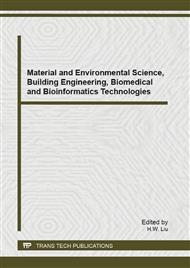p.155
p.160
p.165
p.169
p.173
p.177
p.181
p.185
p.189
Experimental Study of Performance of Self-Stress Lightweight Aggregate Concrete Filled Steel Tubes after Exposure to Fire
Abstract:
The post-fire behavior of a set of self-stress lightweight aggregate concrete filled steel tubular short columns (noted as SSLC-SSC) after exposure to fire was experimentally studied. Effect of the maximum value of fire response temperatures of the tubes and their geometric parameters on the strength and the other mechanical property of the specimens were especially discussed. The experimental results show that the specimens of SSLC-SSC have higher post-fire bearing capacity and better plastic deformation, there was no obvious descent segment in post-fire load-displacement curves of the most specimens subjected to fire load. It was concluded that the maximum response temperature of specimens has great effect on the post-fire bearing capacity of self-stress concrete-filled steel tubes subjected to fire load, and the value of self-stress corresponding to 10% of dosage of expansive agent has the greatest effect on post-fire bearing capacity of specimens of SSLC-SSC.
Info:
Periodical:
Pages:
173-176
Citation:
Online since:
September 2013
Authors:
Price:
Сopyright:
© 2013 Trans Tech Publications Ltd. All Rights Reserved
Share:
Citation:


